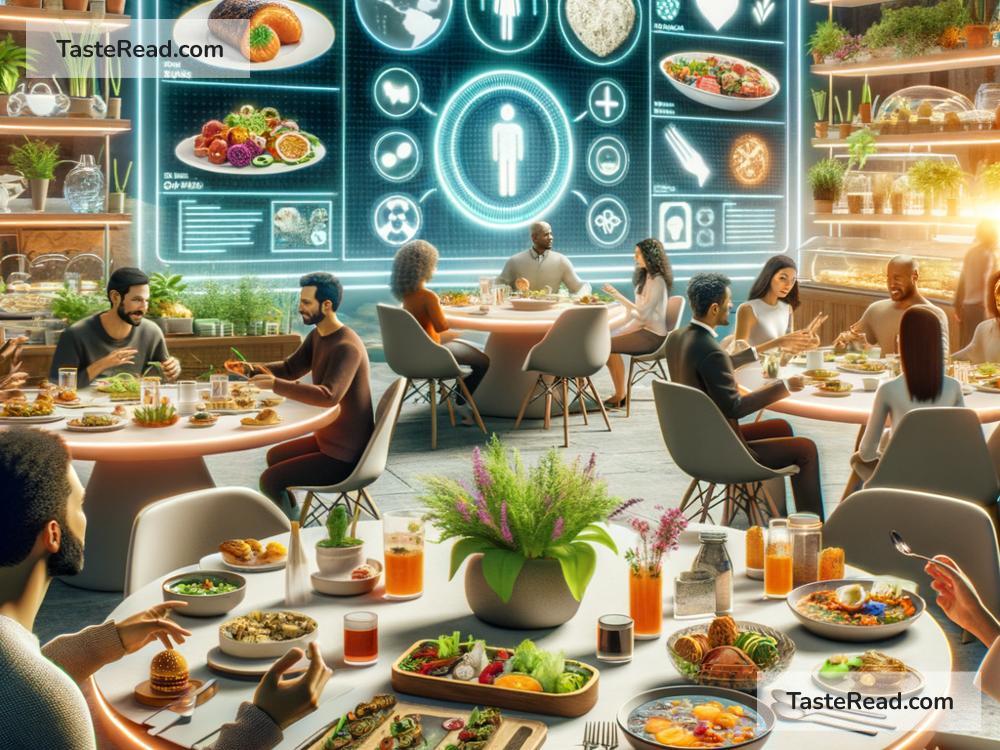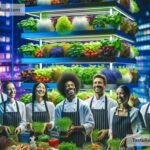The Future of Food: Collaborative Global Solutions for a Better Tomorrow
Food is at the center of human life. It fuels us, connects us, and is part of every culture. But as the world changes, so does the way we grow, share, and enjoy food. Climate change, growing populations, and limited natural resources are creating big challenges for food production and distribution. The good news is that these challenges also bring opportunities to find creative solutions. The future of food depends on how we work together as a global community to build a sustainable, healthy, and equitable food system.
Facing the Challenges
One of the biggest challenges the world faces is feeding a growing population. By 2050, there could be nearly 10 billion people on Earth. That means we’ll need a lot more food, but producing more food is not simple. Farmers face unpredictable weather due to climate change, pests, and diseases that affect crops and livestock. On top of that, some regions of the world struggle with droughts or floods that make farming even harder.
Another challenge is food waste. About one-third of all food produced globally is wasted every year. From farms to supermarket shelves, too much food goes uneaten, while millions of people still suffer from hunger. This wastage not only hurts people but also wastes valuable resources like water, land, and energy.
Lastly, food production has a big impact on the planet. Agriculture contributes to deforestation, greenhouse gas emissions, and biodiversity loss. If we don’t change the way we produce food, it could further harm the planet we depend on.
Innovative Ideas for Better Food
To face these challenges, people around the world are coming up with smart and creative solutions for the future of food. Here are just a few examples:
-
Vertical Farming: Imagine rows of crops growing inside tall buildings instead of fields. Vertical farming uses less land and water, and it can happen close to cities, reducing transportation costs and emissions. It’s an efficient way to grow fresh food year-round.
-
Alternative Proteins: Traditional farming of animals for meat uses a lot of resources. Scientists and entrepreneurs are now creating protein-rich alternatives, like plant-based meat and lab-grown meat. These options may help reduce the environmental impact of farming.
-
Technology in Agriculture: Advanced technologies like drones, sensors, and artificial intelligence are helping farmers monitor their crops and animals more efficiently. These tools make farming smarter, reducing waste and improving yields.
-
Regenerative Agriculture: Regenerative practices focus on restoring soil health, conserving water, and encouraging biodiversity. By working with nature rather than against it, farmers can grow food in ways that benefit the planet.
-
Reducing Food Waste: Apps, platforms, and community efforts are helping consumers and businesses waste less food. For example, some apps connect restaurants with people who need leftover meals or sell surplus food at lower prices.
Collaboration is Key
While innovation is exciting, we won’t solve the world’s food problems by working alone. Collaboration is key to building a better future for food. Governments, businesses, nonprofits, scientists, and communities all need to work together to find global solutions. Here’s how collaboration can make a difference:
-
Sharing Knowledge: Farmers in one country can often learn from those in another. Sharing best practices and new techniques helps improve farming worldwide.
-
Global Policies: Governments can create policies that support sustainable farming, reduce food waste, and protect the planet’s resources. International agreements can ensure these actions happen on a global scale.
-
Equitable Access: Collaboration can help us address food inequality. People in wealthier countries often have more access to food, while others go hungry. Organizations like the United Nations work to ensure every person has access to affordable, nutritious food.
-
Education and Awareness: Everyone can play a role in reducing food waste, eating sustainably, and supporting responsible food production. Educating consumers and businesses about the impact of their choices is a step toward creating change.
-
Innovative Partnerships: Businesses and researchers can team up to bring solutions like lab-grown meat and climate-resistant crops to market. Nonprofit organizations can work with farmers to teach regenerative agriculture. Partnerships bring together resources, knowledge, and funding to tackle big challenges.
A Shared Responsibility
The future of food is a shared responsibility. Small actions by individuals also make a difference. Start by wasting less food at home, supporting local farmers, or trying plant-based meals a few times a week. Every choice matters.
The food challenges we face are big, but our ability to innovate and collaborate is even bigger. By working together across borders, industries, and communities, we can create food systems that are sustainable, equitable, and able to nourish future generations.
The future of food is about more than technology and farming practices—it’s about building a better world where everyone thrives. Let’s work together to shape that future, one meal at a time.

